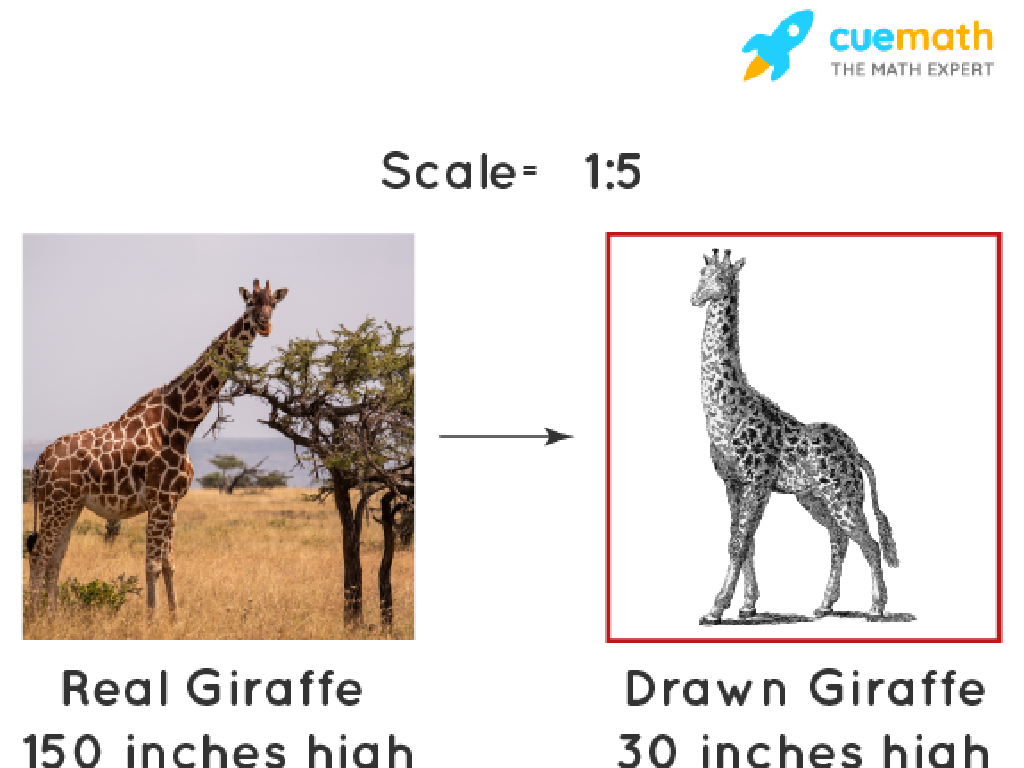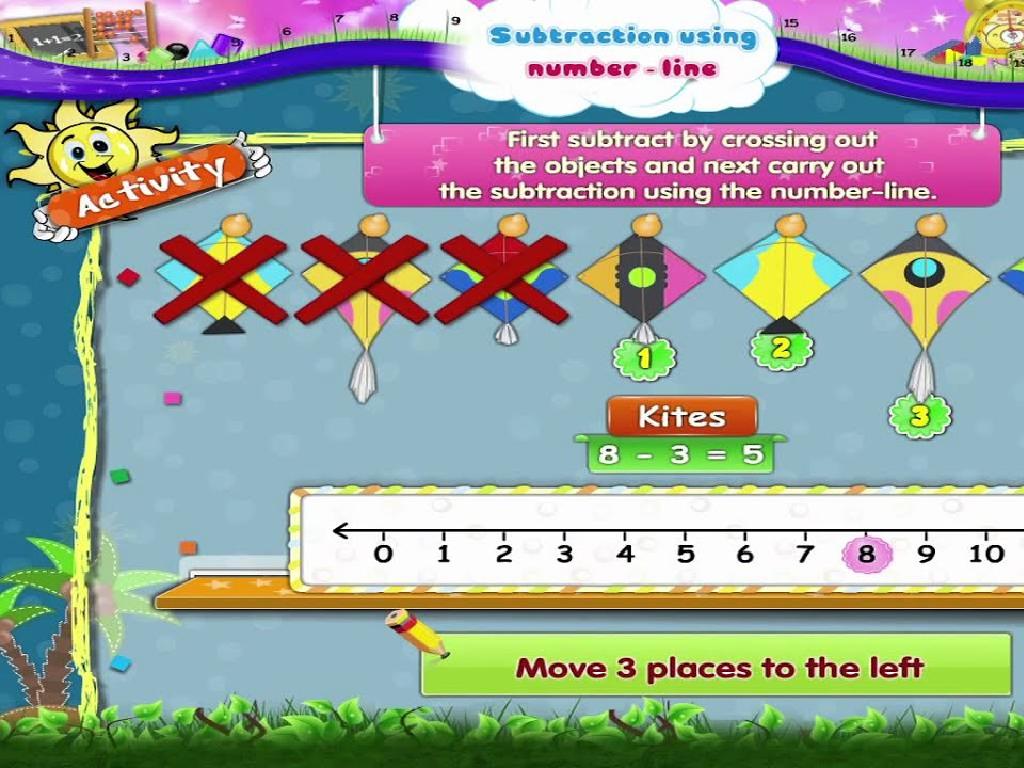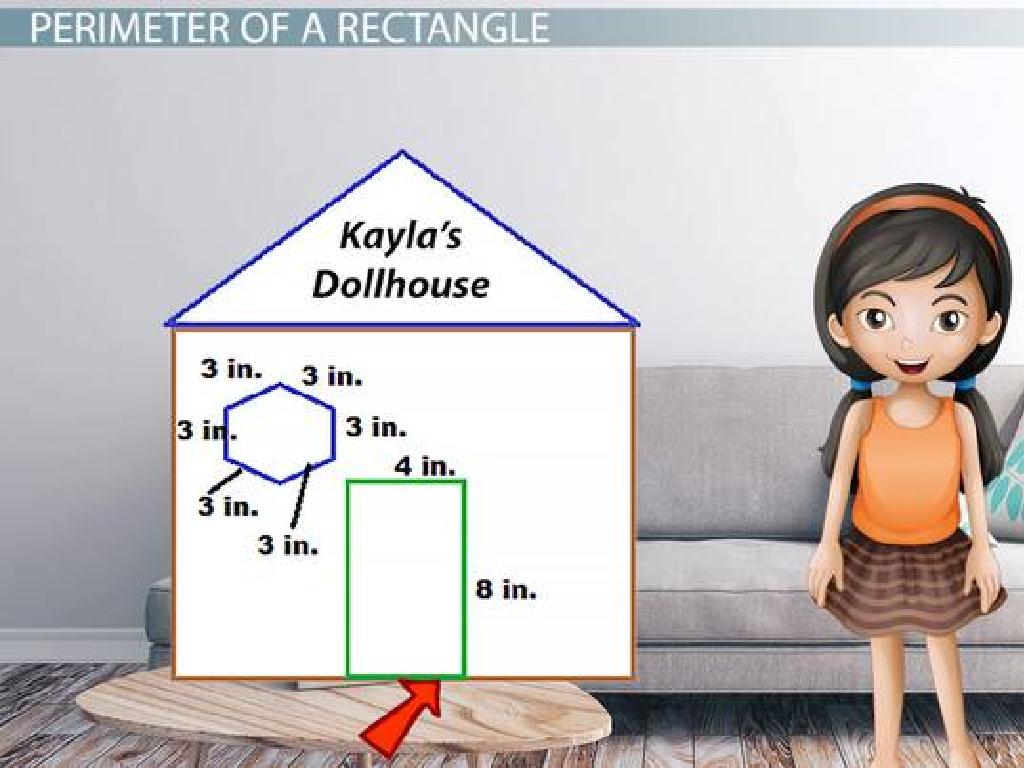Where Do Dromedary Camels And Polar Bears Live?
Subject: Science
Grade: Kindergarten
Topic: Animals
Please LOG IN to download the presentation. Access is available to registered users only.
View More Content
Animal Habitats: Camels and Polar Bears
– Dromedary camels live in deserts
– Think of hot, sandy places like the Sahara
– Polar bears live in icy Arctic
– Imagine the North Pole, with lots of ice and snow
– Animals live in different places
– Why habitats are important
– Animals need the right home to find food and be safe
|
This slide introduces the concept of animal habitats to Kindergarten students, focusing on the dromedary camel and the polar bear as examples. Emphasize that animals live in different places that suit their needs, like how camels live in hot deserts where they can handle the heat and find food, while polar bears live in the cold Arctic where they can use the ice to hunt for seals. Explain that a habitat is like a home for animals, and it’s important because it provides them with everything they need to survive. Encourage the children to think about their own homes and what they need to live comfortably, drawing parallels to how animals also need specific environments to thrive.
Meet the Dromedary Camel
– Dromedary camels have one hump
– The hump stores fat, not water!
– They live in hot deserts
– Deserts like the Sahara are their home
– Camels can go without water
– They can last weeks without drinking
– Camels are desert survivors
|
This slide introduces the dromedary camel to kindergarteners, emphasizing its distinctive features and adaptations to its environment. Highlight the camel’s single hump, which is a key characteristic that differentiates it from other camel species. Explain that camels live in desert areas where it’s very hot and dry, and they have special abilities to survive with little water. Discuss how the camel’s hump is a storage place for fat, which provides energy, and not water as commonly believed. Encourage the children to think about how different animals live in different places and have unique features that help them survive in their habitats.
Desert Habitat: Home of the Dromedary Camel
– Deserts: hot and dry places
– Deserts have sand and very little water
– Few plants in deserts
– Cactus is one of the few plants that can live there
– Camels thrive in deserts
– Camels can go a long time without water
|
This slide introduces the concept of a desert habitat, which is characterized by high temperatures and low precipitation, making it a challenging environment for life. Emphasize the scarcity of water and vegetation, and how certain animals, like the dromedary camel, are specially adapted to survive in these conditions. Discuss the camel’s unique features, such as their humps that store fat, which they can use for energy, and their ability to go for long periods without water. This will help students understand how animals are suited to their habitats and the importance of adaptations in survival.
Meet the Polar Bear
– Polar bears have thick fur
– Their fur keeps them cozy in the cold
– They live in the Arctic
– The Arctic is a snowy home at the top of the world
– Polar bears are great swimmers
– They can swim long distances in icy water
– They have lots of fat for warmth
– Fat helps them stay warm in freezing temperatures
|
This slide introduces kindergarteners to the polar bear, a large animal that lives in the Arctic. Emphasize the adaptations that allow polar bears to survive in their cold environment, such as their thick fur and the layer of fat under their skin. Explain that the Arctic is a very cold place at the North Pole, covered in ice and snow. Highlight their swimming ability, which is important for hunting and traveling across the Arctic. Use simple language and encourage the children to imagine how these adaptations help polar bears live in such a cold place. You can also bring a stuffed polar bear toy or show pictures to help them visualize better.
Arctic Habitat: Home of the Polar Bear
– The Arctic is very cold and snowy
– Imagine a place where it’s winter all the time!
– Trees hardly grow in the Arctic
– It’s too chilly for most plants to grow there.
– Polar bears hunt in icy waters
– They look for seals to eat under the ice.
|
This slide introduces the Arctic habitat, which is characterized by its extreme cold, snowy landscape, and scarcity of vegetation. Emphasize the harsh conditions and how they affect the types of animals and plants that can live there. Explain that polar bears are well adapted to this environment and rely on the icy waters to hunt for their primary food source, seals. Use simple language and relatable comparisons to help kindergarteners understand the concept of different habitats and the animals that live in them. You can bring a globe or a map to show where the Arctic is located and use pictures of polar bears and the Arctic environment to visually engage the students.
Comparing Habitats: Desert vs. Arctic
– Deserts are very hot places
– The Arctic is a very cold place
– Camels live in the desert
– Dromedary camels are adapted to the desert heat
– Polar bears live in the Arctic
– Polar bears are adapted to the Arctic cold
|
This slide aims to introduce the children to the concept of different habitats and how certain animals are adapted to live in these conditions. Deserts are extremely hot and dry areas where dromedary camels thrive. In contrast, the Arctic is a cold, icy environment where polar bears can be found. Encourage the children to think about other animals that live in these contrasting habitats and discuss how they might be adapted to survive there. This can be a starting point for a class discussion or a drawing activity where children can illustrate other animals in these habitats.
Class Activity: Animal Homes
– Pretend to be camels or polar bears
– Create a desert and Arctic in class
– Choose where you’d live as an animal
– Discuss why you made that choice
– Share reasons: Is it because of the weather, the food, or something else?
|
This activity is designed to engage students in a hands-on learning experience about animal habitats. By pretending to be camels and polar bears, they will explore the different environments these animals live in. Set up areas in the classroom that represent the desert and the Arctic. Provide materials like cotton for snow and yellow fabric or paper for sand. Ask the children where they would prefer to live if they were an animal and why. Possible activities: 1) Drawing their chosen habitat, 2) Dressing up as their chosen animal, 3) Describing the food and water available in each habitat, 4) Acting out how they would stay warm or cool. This will help them understand the concept of adaptation and survival in different climates.






